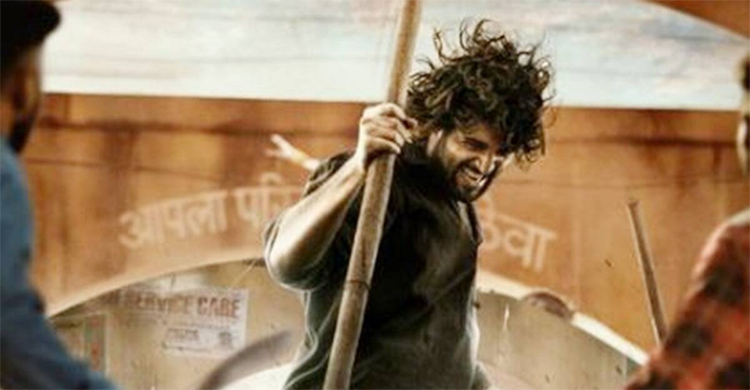Explained: The phenomenon of ‘pan-Indian’ films, their spread and success

With the trailer of Puri Jagannadh’s sports-action drama ‘Liger’ releasing today, the focus is back on “pan-Indian” films.
‘Liger’, starring Vijay Deverakonda, Ananya Panday, Ramya Krishnan, and Mike Tyson, will release on August 25 in five languages: Telugu, Hindi, Malayalam, Kannada, and Tamil. This simultaneous release in multiple languages will ensure that the film reaches a wider audience across the country, making it pan-Indian.
The phenomenon of pan-Indian films, and the social media buzz surrounding them, has occupied a large space in conversations around Indian cinema for the past few years. Be it interviews with film personalities, talks on box office numbers, or discussions among movie buffs, the idea of pan-Indian films has become all-pervasive.
The success of S S Rajamouli’s ‘RRR’ (starring Ram Charan and Jr NTR) and Prashanth Neel’s ‘KGF: Chapter 2’ (starring Yash, Raveena Tandon, and Sanjay Dutt) in the first half of this year have added to the excitement around this trend.
What are pan-Indian films?
To put it in the simplest way possible, a pan-Indian film is one that caters to the tastes and sensibilities of people and communities across the country.
In promotional events, the cast and crew of recent and upcoming pan-Indian films have claimed that all sections of society will find something relatable and resonating in their movie, thus underlining a common-ness that will appeal to cinema-goers all over India.
When did this trend start?
By and large, one can attribute the rise of the pan-Indian film to the success of S S Rajamouli’s ‘Baahubali’ movies. Since the first one came out in 2015, Indian audiences have seen every other big-budget movie being advertised as ‘pan-Indian’ in bold letters.
This phenomenon transcends languages and industries. Telugu superstar Allu Arjun-starrer ‘Pushpa’ (2021) became a blockbuster in every language it was released in. It even managed to sideline native films of the languages — most prominently the Hindi film ’83’, which was about the historic 1983 cricket World Cup win. One could, in fact, argue that ’83’ was on a far more pan-Indian subject than that of ‘Pushpa’, which was about red sandalwood smuggling in Andhra Pradesh.
Most recently, the first single of Ayan Mukerji’s upcoming ‘Brahmāstra’ (2022), starring Alia Bhatt and Ranbir Kapoor, has been generating social media arguments over which language the song sounds better in — and which language version has more meaningful lyrics.
What about nation-wide hits pre-Baahubali?
Indian films have a rich history of being dubbed and remade into other languages: Prabhu Deva’s directorial debut ‘Nuvvostanante Nenoddantana’ (2005), a Telugu movie, was remade into nine other languages. Back in 1959, ‘Mahishasura Mardini’, starring Kannada cinema legend Dr Rajkumar, was dubbed and released in seven other languages.
The difference now is that films are specifically — and aggressively — marketed as “pan-Indian”. According to Payal Patel, a student of film studies, while pan-Indian films have always been around, the term itself became popular post-Baahubali. She says that it’s obvious there’s a lot of money to be made with such films, so this phrase gets hyped for all it is worth.
What could be some other factors influencing this trend?
It could be that as the emphasis on overt nationalism has overtaken almost all other narratives over the past few years, the idea of films that attract and unite audiences across the vast country appears attractive. Many of these films have Hindu mythological themes — for instance, Prabhas, the lead actor of ‘Baahubali’, is going to act in an adaptation of the Ramayana called ‘Adipurush’.
Another popular theme is the struggle for Independence — which is usually shown in a very masculine way, as in the global superhit RRR. And then there are action films with male leads, such as ‘KGF: Chapter 2’, the sequel to ‘KGF: Chapter 1’ (2018). Some commentators have said that the KGF films have led to a revival of interest in ‘Sandalwood’, as the Kannada film industry is sometimes called.
What role have women played in the so-called pan-Indian films?
The recent discourse on pan-Indian has not taken into account female actors and characters.
Historically, Sridevi was probably the first ‘pan-Indian’ star. She had a cult fanbase across the country, and her filmography bears testimony to the fact that it is possible to be successful with both hard-hitting social dramas like K Balachander’s Tamil film ‘Varumayin Niram Sivappu’ (1980), and masala movies like K Raghavendra Rao’s Telugu film ‘Devatha’ (1982) and its Hindi remake ‘Tohfa’ (1984).
Jayaprada, Sridevi’s contemporary, too was popular in multiple industries. More recently, Tabu has had blockbusters in various languages.
Interestingly, not many male stars have made smooth transitions into other industries — even though most pan-Indian films have centered around a lead male character, and the male superstar has become the face of the project.
Source: The Indian Express

